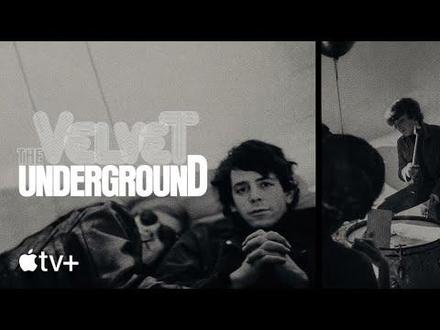When Todd Haynes has looked at musicians, the director's implications have always exploded far beyond glam rock ("The Velvet Goldmine"), Bob Dylan ("I'm Not There") or Karen Carpenter ("Superstar"). True to form, Haynes' "The Velvet Underground" is more than a documentary about a rock band; it's a hall of broken mirrors that reflects his favorite themes of culture quake, identity and sexuality. And it's a work of abstract art.
Haynes doesn't just let John Cale, Mary Woronov, Jonathan Richman, La Monte Young and the rest tell us about the excitement of 1960s Warhol Factory New York; like an artist, he SHOWS us. Thanks to Andy Warhol's famous "screen tests," we're treated to long vintage closeups of Cale, Lou Reed, Sterling Morrison and Maureen Tucker -- the original band -- framed in various spaces within the visual field, alongside cultural signifiers that either grate against the Velvets' avant aesthetic (Winston cigarette commercial, news anchor Walter Cronkite) or meld with it (the painting of Mark Rothko and Jackson Pollock, the animation of Stan Brakhage and Oskar Fischinger, the film of Kenneth Anger).
Who were these unlikely musical stars? Haynes knows it always depends on the moment. Gay outcast or rock bully? Bohemian or devoted mom? Guitarist or technical laborer? Miner's son, avant-garde musician or record producer? Since Haynes doesn't narrowcast, his portraits resonate as human lives -- naifs with beautiful eyelashes become old wizards creased with experience.
The compendium of images, interviews and music is outstanding; beyond the tracks from the group's first four studio albums, even inveterate VU fans will find much of it fresh. Special obeisance goes to the sound team of Leslie Shatz and John Sood, who have made the aural dynamism measure up to the visuals: Diving into "TVU" with amplifier cranked pays big dividends.
Reed preferred amphetamines to heroin, and the pace of "TVU" runs accordingly. We feel the energy of 1966 New York in the barrage of unabsorbable images, divided into multiple windows in the manner of Michael Wadleigh's 1970 "Woodstock." Although comparing the two may seem like comparing crank to acid, commonalities certainly exist. Those who lived through the time will remember making little distinction between the drug deal in the VU's "Waiting for the Man" and a similar scene in Jefferson Airplane's "3/5 of a Mile in Ten Seconds."
The Encino-raised but Ivy League-educated Haynes, however, is determined to draw a bright line between the countercultures of East Coast and West, deputing Reed, drummer Tucker and actor Woronov to ridicule the flower power they encountered on their 1966 trip to L.A. and San Francisco, and to compare Frisco light shows unfavorably with the VU's Exploding Plastic Inevitable (both coasts developed ambitious audiovisual presentations at the same time). Haynes selects New York transplants the Mamas and the Papas to exemplify the L.A. pop music despised by the Village-hip VU, while he ignores more appropriate Angel City comparisons such as the poetic, drone-jamming Doors or the crude, R&B-flavored Seeds. On which coast do Woronov, Cale and Haynes now dwell? Take a guess.
"Being afraid of what's about to happen is the beginning of improvisation," says Cale in one of his many acute observations. Todd Haynes might have harbored some trepidation when he approached a revered subject such as the Velvet Underground. But it looks as if he got over that after tackling Bowie and Dylan. He's not improvising anymore.
* * *
"The Velvet Underground" is now streaming on Apple TV+, and is screening at select theaters, including the Nuart in Santa Monica.

